Don't wanna be here? Send us removal request.
Text
New Post has been published on The Maier Files
New Post has been published on https://the.maier-files.com/money-in-a-free-society/
Money in a free society ...
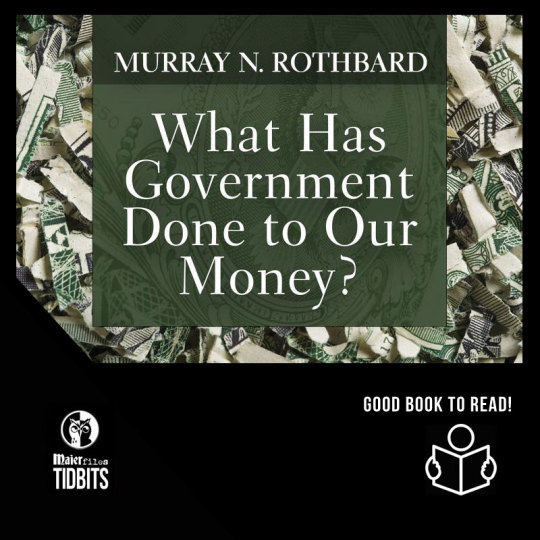
FEW ECONOMIC SUBJECTS ARE more tangled, more confused than money. Wrangles abound over “tight money” vs. “easy money,” over the roles of the Federal Reserve System and the Treasury, over various versions of the gold standard, etc. Should the government pump money into the economy or siphon it out? Which branch of the government? Should it encourage credit or restrain it? Should it return to the gold standard? If so, at what rate? These and countless other questions multiply, seemingly without end. Perhaps the Babel of views on the money question stems from man’s propensity to be “realistic,” i.e., to study only immediate political and economic problems. If we immerse ourselves wholly in day-to-day affairs, we cease making fundamental distinctions, or asking the really basic questions. Soon, basic issues are forgotten, and aimless drift is substituted for firm adherence to principle.
[vc_row][vc_column width=’3/4′]
Often we need to gain perspective, to stand aside from our everyday affairs in order to understand them more fully. This is particularly true in our economy, where interrelations are so intricate that we must isolate a few important factors, analyze them, and then trace their operations in the complex world. This was the point of “Crusoe economics,” a favorite device of classical economic theory. Analysis of Crusoe and Friday on a desert island, much abused by critics as irrelevant to today’s world, actually performed the very useful function of spotlighting the basic axioms of human action. Of all the economic problems, money is possibly the most tangled, and perhaps where we most need perspective. Money, moreover, is the economic area most encrusted and entangled with centuries of government meddling. Many people—many economists—usually devoted to the free market stop short at money. Money, they insist, is different; it must be supplied by government and regulated by government. They never think of state control of money as interference in the free market; a free market in money is unthinkable to them. Governments must mint coins, issue paper, define “legal tender,” create central banks, pump money in and out, “stabilize the price level,” etc. Historically, money was one of the first things controlled by government, and the free market “revolution” of the eighteenth and nineteenth centuries made very little dent in the monetary sphere. So it is high time that we turn fundamental attention to the life-blood of our economy— money. Let us first ask ourselves the question: Can money be organized under the freedom principle? Can we have a free market in money as well as in other goods and services? What would be the shape of such a market? And what are the effects of various governmental controls? If we favor the free market in other directions, if we wish to eliminate government invasion of person and property, we have no more important task than to explore the ways and means of a free market in money.
Rothbard shows precisely how banks create money out of thin air and how the central bank, backed by government power, allows them to get away with it. He shows how exchange rates and interest rates would work in a true free market. When it comes to describing the end of the gold standard, he is not content to describe the big trends. He names names and ferrets out all the interest groups involved. A very good read.
Amazon
[/vc_column][vc_column width=’1/4′]



[/vc_column][/vc_row]
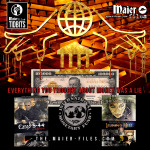
Whistleblower Reveals WorldBank Scheme
For those who are reading the Maier Files and guessing that the story of Otto Maier, Oskar Gross and their struggle with the occulted Criminal Banking Cartel is just a fancy tale, think again. The goal is indeed control. They want all of us enslaved to debt, they want all of our governments enslaved to debt, and they want all......
1 Like
Share

The Shocking Truth About Our Money System
The process by which money comes into existence is thoroughly misunderstood, and for good reason: it has been the focus of a highly sophisticated and long-term disinformation campaign that permeates academia, media, and publishing. The complexity of the subject has been intentionally exploited to keep its mysteries hidden. Henry Ford said it best: [vc_row][vc_column width=’3/4′]This book, Web of Debt by Ellen......
2 Likes
Share
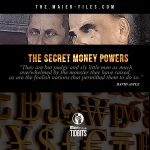
The Secret Money Powers
David Astle is a researcher who has assembled a massive database and well-argued case for the existence, in ancient times, of an international bullion brokers’ trust, allied with manipulating governments, religions, pantheons and policies behind the scenes for its own benefit and agenda. [vc_row][vc_column width=’3/4′] Mr. Astle commenced a sea career at sixteen years of age. During the following years......
5 Likes
Share

The real money power
“Single acts of tyranny may be ascribed to the accidental opinion of a day, but a series of oppressions, begun at a distinguished period, and pursued unalterably through every change of ministers, too plainly prove a deliberate systematical plan of reducing us to slavery.” — Thomas Jefferson American Founding Father who was the principal author of the Declaration of Independence......
0 Likes
Share

The money alchemists
The destruction of the worldwide economic order in the wake of World War II encouraged world leaders in 1944 to form a meeting to generate alternatives. This conference, referred to as Bretton Woods, resulted in the development of a new global fixed exchange rate regime with the U.S. dollar playing a central role. Under the Bretton Woods system, an ounce......
0 Likes
Share

The monetary secret of the ages
Alexander Del Mar disclosed the “monetary secret of the ages” For thousands of years this mechanism was a great source of power to whoever held it. Elements of the Roman establishment drew great strength from their control over it, until its effects helped bring down the Roman empire from within. Venice’s profits from it helped spark the Renaissance. It was......
0 Likes
Share

The Impending Collapse of Fiat Currency
Few people truly understand the complexities involved with central banking. Most people throughout modern history have made the terrible mistake of not understanding the relevance of their nation’s central banking scheme and a centrally planned economy to their own wealth preservation. [vc_row][vc_column width=’3/4′] Best example is the American FED. But America is not unique in this economic plunder, as private......
2 Likes
Share

THE HOUSE OF MORGAN
“The House of Morgan” is about the rise, fall, and resurrection of an American banking empire—the House of Morgan. Perhaps no other institution has been so encrusted with legend, so ripe with mystery, or exposed to such bitter polemics. Until 1989, J. P. Morgan and Company solemnly presided over American finance from the “Corner” of Broad and Wall. Flanked by......
0 Likes
Share
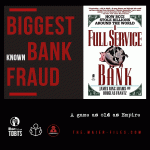
The biggest known bank fraud in the world
The Bank of Credit and Commerce International (BCCI) was a useful tool for many powerful clients, ranging from the CIA and the Medellín cartel to Osama bin Laden, al-Qaeda, and influential figures in both the Republican and Democratic parties of the USA. When BCCI was finally shut down, as much as $15 billion had been lost or stolen—the biggest bank......
0 Likes
Share
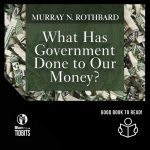
Money in a free society …
FEW ECONOMIC SUBJECTS ARE more tangled, more confused than money. Wrangles abound over “tight money” vs. “easy money,” over the roles of the Federal Reserve System and the Treasury, over various versions of the gold standard, etc. Should the government pump money into the economy or siphon it out? Which branch of the government? Should it encourage credit or restrain......
0 Likes
Share

Major cover ups
Backstories on Maier files. The the Bank for International Settlement (BIS) was established on 17 May 1930, The following information can be found on the BIS bank’s website and can be consulted openly. www.bis.org It’s a good reading for everyone who wants to get to know more about the story of Rolf Dietrich, the true conspiracies and plot twists.......
0 Likes
Share

Gold price manipulation & banking corruption
The secret origins of the financial powers … Gold price manipulation & banking corruption The Financial Times published this: Global gold prices may have been manipulated on 50 per cent of occasions between January 2010 and December 2013, according to analysis by Fideres, a consultancy. The findings come amid a probe by German and UK regulators into alleged manipulation......
2 Likes
Share
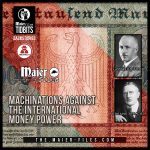
Debt free money more than a good reason for hidden wars
If you’re interested in the dark, hidden backstories, reading Stephen Zarlenga’s book – The Lost Science of Money: The Mythology of Money, The Story of Power … is a perfect good start! And for those who can read between the lines also Dr. Hjalmar Schacht, his 1967 book The Magic of Money is a real eye-opener. Original German version: Magie......
1 Like
Share
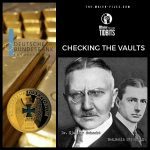
Checking the Vaults
A large portion of Germany’s massive gold reserves are stored abroad, mainly in the Federal Reserve in New York. But are the bars really where they are supposed to be? A dispute has broken out over whether the central bank needs to check on its gold, or if Germany can trust its international partners. Gold has been natural money for......
2 Likes
Share
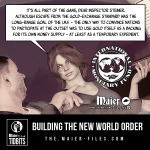
Building the New World Order
The IMF and the World Bank, were created at a meeting of global financiers and politicians held at Bretton Woods, New Hampshire, in 1944. Their declared objectives were to encourage universal exchange and to settle the trade rates of national currencies. The unannounced objectives were quite different. They were the end of the gold-trade standard as the premise of money......
2 Likes
Share

Biggest market crash in history is coming soon
“Since it is quite impossible to understand the history of the twentieth century without some understanding of the role played by money in domestic affairs and in foreign affairs, as well as the role played by bankers in economic life and in political life, we must take a glance at each of these four subjects.” quote of professor Carroll Quigley,......
0 Likes
Share
0 notes
Text
New Post has been published on The Maier Files
New Post has been published on https://the.maier-files.com/15-percent-off/
15 Percent off

Wanna support Maier files and get cool stuff? Aim for the 15% discount at the merchandise store. Run Time: November 23rd – 25th – Take a look!
https://the.maier-files.com/tshirts/#!/
0 notes
Text
New Post has been published on The Maier Files
New Post has been published on https://the.maier-files.com/the-glass-bead-game/
The Glass Bead Game
Gelegentlich ergreifen wir die Feder and schreiben Zeichen auf ein weisses Blatt, Die sagen dies and das, es kennt sie jeder, Es ist ein Spiel, das seine Regeln hat. —Hermann Hesse. Das Glasperlenspiel
From time to time we take our pen in hand and scribble symbols on a blank white sheet. Their meaning is at everyone’s command; It is a game whose rules are nice and neat. —Hermann Hesse, The Glass Bead Game,
[vc_row][vc_column width=’3/4′]
When Hermann Hesse’s book The Glass Bead Game appeared in 1943, anyone who had ventured the opinion that this novel’s story of a game of the intellect could be taken as anything more than a literary fiction would have been roundly ridiculed. Yet only a few months later the birth of game theory had translated the coordinates of human knowledge, and the strange parallels between literary and scientific imagination were already discernible.
The tool used by John von Neumann and Oskar Morgenstern in their seminal monograph Theory of Games and Economic Behavior to study the values of mankind was indisputably mathematics. Their book is the classic work upon which modern-day game theory is based. In it, John von Neumann and Oskar Morgenstern conceived a groundbreaking mathematical theory of economic and social organization, based on a theory of games of strategy. And yet, if one follows the history of this glass bead game back through the centuries, one encounters in every nook and cranny a vast treasure trove of motifs and situations that—with contributions from the most diverse disciplines—have significantly influenced the development of game theory.
Magister Ludi
“Glass Bead Game” is a literal translation of the German title, but the book has also been published under the title Magister Ludi, Latin for “Master of the Game”, which is an honorific title awarded to the book’s central character. “Magister Ludi” can also be seen as a pun: lud- is a Latin stem meaning both “game” and “school”. However, the title Magister Ludi is misleading, as it implies the book is a straightforward bildungsroman. In reality, the book touches on many different genres, and the bulk of the story is on one level a parody of the biography genre.
The Glass Bead Game takes place at an unspecified date centuries into the future. Hesse suggested that he imagined the book’s narrator writing around the start of the 25th century. The setting is a fictional province of central Europe called Castalia, which was reserved by political decision for the life of the mind; technology and economic life are kept to a strict minimum. Castalia is home to an austere order of intellectuals with a twofold mission: to run boarding schools for boys, and to cultivate and play the Glass Bead Game, whose exact nature remains elusive and whose devotees occupy a special school within Castalia known as Waldzell. The rules of the game are only alluded to—they are so sophisticated that they are not easy to imagine. Playing the game well requires years of hard study of music, mathematics, and cultural history. The game is essentially an abstract synthesis of all arts and sciences. It proceeds by players making deep connections between seemingly unrelated topics. The reader follows the life of a distinguished member of the Castalian Order, Joseph Knecht, whose surname means “servant”.
The beginning of the novel introduces the Music Master, the resident of Castalia who recruits Knecht as a young student and who is to have the most long-lasting and profound effect on Knecht throughout his life. At one point, as the Music Master nears death in his home at Monteport, Knecht obliquely refers to the Master’s “sainthood”. As a student, another meaningful friendship develops with Plinio Designori, a student from a politically influential family, who is studying in Castalia as a guest. Knecht develops many of his personal views about what larger good Castalia can achieve through vigorous debates with Designori, who views Castalia as an “ivory tower” with little to no impact on the outside world.
Although educated within Castalia, Knecht’s path to “Magister Ludi” is atypical for the order, as he spends a significant portion of his time after graduation outside the boundaries of the province. His first such venture, to the Bamboo Grove, results in his learning Chinese and becoming something of a disciple to Elder Brother, a recluse who had given up living within Castalia. Next, as part of an assignment to foster goodwill between the order and the Catholic Church, Knecht is sent on several “missions” to the Benedictine monastery of Mariafels, where he befriends the historian Father Jacobus – a relationship which also has profound personal impact for Knecht.
As the novel progresses, Knecht begins to question his loyalty to the order, gradually coming to doubt that the intellectually gifted have a right to withdraw from life’s big problems. Knecht, too, comes to see Castalia as a kind of ivory tower, an ethereal and protected community, devoted to pure intellectual pursuits but oblivious to the problems posed by life outside its borders. This conclusion precipitates a personal crisis, and, according to his personal views regarding spiritual awakening, Knecht does the unthinkable: he resigns as Magister Ludi and asks to leave the order, ostensibly to become of value and service to the larger culture. The heads of the order deny his request to leave, but Knecht departs Castalia anyway, initially taking a job as a tutor to his childhood friend Designori’s energetic and strong-willed son, Tito. Only a few days later, the story ends abruptly with Knecht drowning in a mountain lake while attempting to follow Tito on a swim for which Knecht was unfit.
[/vc_column][vc_column width=’1/4′]
[/vc_column][/vc_row]
[vc_row][vc_column width=’1/3′]
https://amzn.to/2TyKFYb[/vc_column][vc_column width=’1/3′]
https://amzn.to/2R3ZobU
[/vc_column][vc_column width=’1/3′]
https://amzn.to/2Ksfae4
[/vc_column][/vc_row]
0 notes
Text
New Post has been published on The Maier Files
New Post has been published on https://the.maier-files.com/the-loss-of-liberty/
The loss of liberty
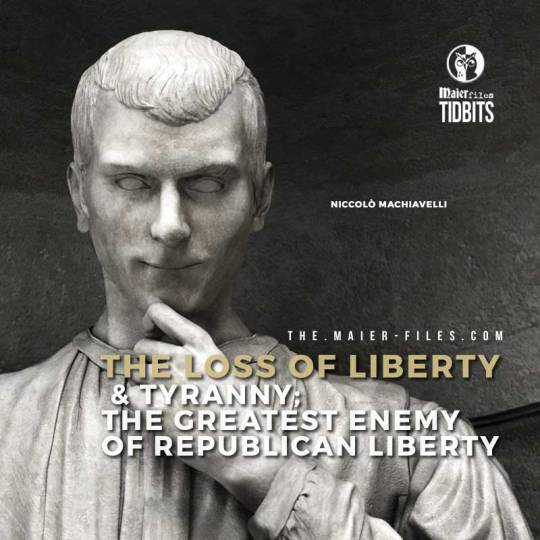
“When one sees a great error made by an enemy, one ought to believe that there is deception underneath.” Then, we should be on the lookout for intentional “great errors” as we read Machiavelli’s works too.
[vc_row][vc_column width=’3/4′]
Machiavelli’s works are obviously packed with quotations, including allusions and referrals to ancient historians, poets, and philosophers. But yet what about the Bible? Unexpectedly, even though there are lots of allusions to biblical tales, in the whole of the Prince and the Discourses, you can find just one, single quote from the Bible. Moreover, this quote occurs in a distinctly essential chapter, book 1, chapter 26: the single chapter in the total of the Discourses—a work dedicated to the analysis and restoration of republican government—that is explicitly focused on tyranny, to the greatest enemy of republican liberty.
It is honest to state, then, that at least for the mindful readers, a twofold spotlight, as it were, falls on this short quote. Machiavelli utilizes it in the course of explaining that if a man should rise from private life to be the sole ruler of a city or province, especially an unruly one, then the only sure means for holding onto it is to “make everything new.” What this simple-sounding phrase means is something extraordinarily tyrannical:
to make in cities new governments with new names, new authorities, new men; to make the rich poor, the poor rich, as did David when he became king—“who filled the hungry with good things and sent the rich away empty”; besides this to build new cities, to take down those built, to exchange the inhabitants from one place to another.
Machiavelli himself goes on to remark: These modes are very cruel, and enemies to every way of life, not only Christian but human; and any man whatever should flee them and wish to live in private rather than as king with so much ruin to men. Machiavelli, Discourses, 61–62 (1.26)
Machiavelli makes a peculiar blunder here. The quote he recites is not relating to David whatsoever. It is describing—God! An calculated “great error”? Perhaps it would appear to be covertly communicating a significant and dangerous message: that the Biblical God is a great tyrant or, more in general, that the Christian religion is probably the real cause of the loss of the ancient republican liberty that he, Machiavelli, is trying in this book to rebuild or to revive. In the ‘Prince’, as well, Machiavelli addresses the loss of liberty in the postclassical world. In one of his best known teachings, he emphasizes that the modern world has become weak and enslaved essentially due to the dependence on mercenary and auxiliary troops—on outside forces. This military problem—and not Christianity—would appear to be the main reason for losing freedom. To remain strong and free, one must always rely on “one’s own arms.” To prove and illustrate this core principle of self-reliance, Machiavelli gives a number of examples, culminating in the famous biblical story of David and Goliath.
Saul, to give David spirit, armed him with his own arms—which David, as soon as he had them on, refused, saying that with them he could not give a good account of himself, and so he would rather meet the enemy with his sling and his knife.
As most everyone knows, David did not take a knife or sword with him, but only his sling. The whole point of the story—indeed, the whole point of the story—is that we should not rely on ourselves or our own arms: we must put our whole faith and trust in the Lord, who alone can deliver us from our enemies as from all evil.
He presented the David and Goliath tale to be able to claim, on the outside, that his new teaching is conforming to the Bible. But he changes— he reverses—the crucial fine detail of the knife to be able covertly to declare the quite contrary statement: that his central new teaching of military self-reliance—and in the end of human self-reliance—is diametrically in opposition to the central teaching of the Bible. For the Christian teaching of passivity and trust in the Lord, in his view, has disarmed the world, making it weak and ripe for tyranny. Machiavelli would contribute to the restoration of ancient republican liberty by putting a sword back in human hands. … Nothing is ever what it seems.
[/vc_column][vc_column width=’1/4′]



[/vc_column][/vc_row]
1 note
·
View note
Text
New Post has been published on The Maier Files
New Post has been published on https://the.maier-files.com/the-omnipresent-retinger/
The omnipresent Retinger
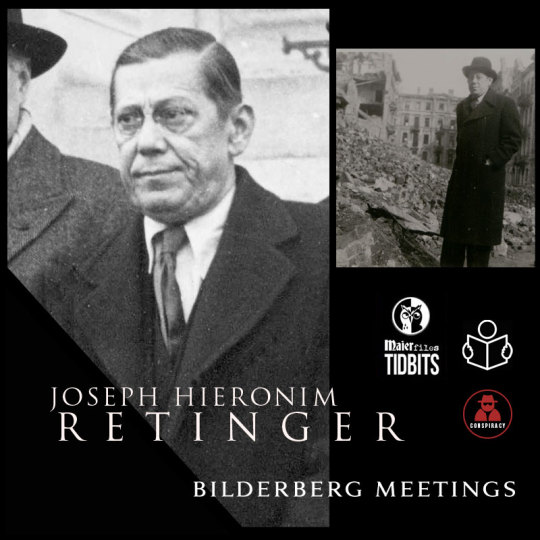
Dr. Joseph Hieronim Retinger is perhaps one of the most mysterious figures of the twentieth century. It is he who is credited with being the father of Bilderberg. He is also credited with being the motivating force behind the European League for Economic Cooperation, the European Movement, and the Council of Europe. A compulsive intriguer and behind-the-scenes political wheeler-dealer, Retinger became known in his circles as a “grey eminence”. At different times he was rumoured to have been an agent for the Socialist Internationale, the Freemasons, the Vatican, and the government of Mexico. Others saw him as an irresponsible meddler and a penniless adventurer. Even his friends, people like former Italian diplomat Pietro Quaroni, ask, “Did we really know him?” Denis de Rougemont, head of the European Cultural Center (which Retinger founded), worked with Retinger for over thirteen years, yet he too asks, “How well did I really know him?” But on one point they all agree: Retinger was one of the best informed people in the world.
[vc_row][vc_column width=’3/4′]
Retinger was born in Kraków, Poland (then part of Austria-Hungary), the youngest of four children. His father, Józef Stanisław Retinger, was the personal legal counsel and adviser to Count Władysław Zamoyski. When Retinger’s father died, Count Zamoyski took Józef into his household. Financed by Count Zamoyski, Retinger entered the Sorbonne in 1906, and two years later became the youngest person to earn a Ph.D. there at age twenty. He moved to England in 1911.
A Polish patriot at heart, Retinger struggled to make connections and penetrate inner government rings as political agent and head of the Polish Bureau in London. Retinger obtained a reputation for being both cheeky and crude. He rapidly made numerous enemies. During the years of World War I Retinger shuffled backwards and forwards between London and Paris. On one spring morning in 1918 while in Paris, Retinger was summoned by M. Jules Pams, the French Interior Minister. Due to certain unspecific intrigue typical of Retinger, he was ordered to leave the Allied nations or deal with an official expulsion. Angered, Retinger departed that very afternoon on a 4 pm train to Spain.
He spent the next nine months in virtual poverty, mostly in Barcelona. Then he one way or another he was able to obtain passage on a cargo boat destined for Havana Cuba. He rapidly got bored with Havana and moved on to Mexico where he once more engaged himself in the local political intrigue of the day. He helped build up a secret society consisted of young Mexican patriots, called the “Action Committee”. It was Retinger who later on advised the Mexican Government to nationalise American-owned petroleum wells and who helped expose an American oilmen conspiracy to provoke a war between the United States and Mexico. Next the ever-adventurous Retinger smuggled himself across the Rio Grande and into Texas. He boarded a train to Washington, D.C. and looked up Felix Frankfurter, obviously a good old acquaintance, upon his arrival. In the early 1920s, Retinger carried out various secret missions for President Obregon. In 1924 he established the first congress of Latin American trade unions. In Retinger’s memoirs there is addititionally proof of a secret mission to the Vatican to fix up relations between Mexico and the Church. It was in 1924 that the concept of European unity first occured to Dr. Retinger. With British Member of Parliament E. D. Morel, he attempted to establish a clandestine organisation with the purpose of promoting European unity.
With World War II coming on strong, Retinger in 1939 joined forces with General Sikorski and the Polish Government in Exile in London. He became Sikorski’s most trusted political advisor. In July 1943, Sikorski died tragically in a plane crash. Retinger teamed up with General Sir Colin Gubbins, head of the super-secret S.O.E. Retinger, although 56 years of age, was parachuted into German-occupied Poland. The goal of the mission was to persuade the Polish underground forces and political leadership to accept that it was imperative to start negotiating with the Soviets, as they were now to be considered Poland’s allies and had the full support of the British and Americans.
At the end of the war, Retinger, with greater passion resumed his campaign for a unified Europe. On May 8, 1946 he addressed the Royal Institute for International Affairs and from this speech grew the idea of a European Movement. Working closely with Paul Van Zeeland, the Belgian Minister for Foreign Affairs, and Paul Rijkens of Unilever, Retinger organised the First Congress of Europe at The Hague in 1948. From it sprang the Council of Europe and various national committees of the European Movement. In July 1948 Retinger made a trip to the United States with former Belgian Prime Minister Paul Henri Spaak, Winston Churchill, and Duncan Sandys, President of the European Movement, to seek funds for the non-governmental, political activities of the European Movement. As a result of this initiative, an organisation called the American Committee on a United Europe was formed. The A.C.U.E. was officially launched during a luncheon in honour of Winston Churchill on March 29th, 1949. Most significant about A.C.U.E. was its leadership: Its Chairman was William Donovan, former Director of the Office of Strategic Services (the wartime intelligence agency of the United States). Its Vice-Chairman was Allen Dulles, Director of the newly-formed Central Intelligence Agency. Its Secretary was George Franklin, then Director of the Council on Foreign Relations (and now “Coodinator” of the Trilateral Commission, examined in Part Two of this book). Its Executive Director was Thomas Braden, head of the CIA’s division on international organisations. Shortly after its inception, A.C.U.E. began to send money to the Brussels headquarters of the European Movement, of which Retinger was now Secretary General. According to John Pomian, Retinger’s personal assistant from 1948 until Retinger’s death in 1960. “Retinger always believed that public opinion follows the lead of certain individuals.” Perhaps in this spirit, Retinger, in 1952, went back to Paul Van Zeeland and Paul Rijkens, his European Movement associates, with the suggestion of organising unofficial meetings of important people from NATO countries. The purpose he visualised for such a forum was 1) to help promote the case for European unity and 2) to form an Atlantic alliance. Rijkens liked the idea and he arranged for Retinger to meet Prince Bernhard of the Netherlands. Bernhard, it was felt, would be the ideal figurehead for such a forum because of his royalty and ‘apolitical’ standing. Together, Prince Bernhard and Dr. Retinger journeyed to Washington, D.C. and lobbied the support of General Walter Bedell Smith, Director of the CIA, and Charles Jackson, a national security assistant to President Eisenhower. An American committee was formed. Its original members included John Coleman, Chairman of the Burroughs Corporation, David Rockefeller of Chase Manhattan Bank, Dean Rusk, head of the Rockefeller Foundation, Henry Heinz II, of 57 varieties fame, Joseph Johnson, President of the Carnegie Endowment for International Peace, and George Ball. The first formal conference was arranged for May 29-31 at Hotel de Bilderberg in the small Dutch town of Oosterbeek, courtesy of the Dutch Government and the American CIA. … The Bilderberg-group was born. …
A good read on the subject:
https://amzn.to/2T8RuzF
[/vc_column][vc_column width=’1/4′]



[/vc_column][/vc_row]

Martin Bormann
He plays a small role in the story about the disappearance of Otto Maier and Maier files, Martin Bormann. In May 1941 Martin Bormann was made Party Chancellor of the National Socialist Party, a position he utilized to become the Third Reich’s principal bureaucrat. He was also Hitler’s right-hand man, his personal secretary and his bookkeeper, and stood with the......
2 Likes
Share
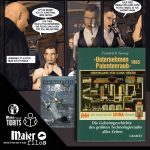
Unternehmen Patentenraub 1945
Plenty of present-day authors have demonstrated that the German science and technology in the 1930’s and 1940’s extended far beyond the flash and bang of atomic weapons, flying discs, rail guns and other fascinating technological innovations. It extended into the everyday life of the post-war world. Thousands and thousands of patents were taken away by the Allies from German vaults......
3 Likes
Share

THE HOUSE OF MORGAN
“The House of Morgan” is about the rise, fall, and resurrection of an American banking empire—the House of Morgan. Perhaps no other institution has been so encrusted with legend, so ripe with mystery, or exposed to such bitter polemics. Until 1989, J. P. Morgan and Company solemnly presided over American finance from the “Corner” of Broad and Wall. Flanked by......
0 Likes
Share
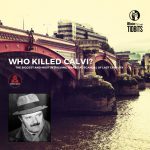
Who Killed Calvi?
On 18 June 1982 the body of Roberto Calvi was found swinging on a length of orange nylon rope beneath Blackfriars Bridge, London. He had £10,000 worth of sterling, Italian lire and Swiss francs in his wallet and his trousers were stuffed with bricks and stones from a nearby building site. The British coroner recorded a case of suicide. [vc_row][vc_column......
0 Likes
Share

International bankers and the Bolshevik revolution
Since the early 1920s, numerous pamphlets and articles, even a few books, have sought to forge a link between “international bankers” and “Bolshevik revolutionaries.” Rarely have these attempts been supported by hard evidence, and never have such attempts been argued within the framework of a scientific methodology. Indeed, some of the “evidence” used in these efforts has been fraudulent, some......
2 Likes
Share

Playing for high Stakes
Herbert Osborn Yardley (April 13, 1889 – August 7, 1958) was an American cryptologist. He founded and led the cryptographic organization the Black Chamber. Under Yardley, the cryptanalysts of The American Black Chamber broke Japanese diplomatic codes and were able to furnish American negotiators with significant information during the Washington Naval Conference of 1921-1922. Recipient of the Distinguished Service Medal.......
0 Likes
Share
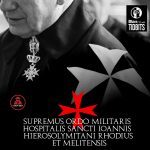
The Knight Templars & the Knights of Malta
The secret about the Templars would not be if it had not been made to be by circles and powers who had and have an understandable interest – from their point of view – to keep the truth in obscurity. Originally known as the Knights Hospitaller, the Sovereign Military Hospitaller Order of Saint John of Jerusalem of Rhodes and of......
0 Likes
Share

The biggest known bank fraud in the world
The Bank of Credit and Commerce International (BCCI) was a useful tool for many powerful clients, ranging from the CIA and the Medellín cartel to Osama bin Laden, al-Qaeda, and influential figures in both the Republican and Democratic parties of the USA. When BCCI was finally shut down, as much as $15 billion had been lost or stolen—the biggest bank......
0 Likes
Share
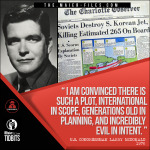
Do I mean Conspiracy? Yes I Do.
In the list of Conspiracies the case of Lawrence Patton “Larry” McDonald fits perfectly. Is it a conspiracy theory as many tried to ridicule his claims or is it indeed, a fact? In any case the coincidences are weird! Lawrence Patton “Larry” McDonald (April 1, 1935 – September 1, 1983) was an American politician and a member of the United......
4 Likes
Share
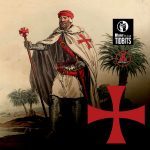
Secret Societies of the Middle Ages
The 3 most eye-catching secret societies are the muslim Assassins, the Templars and the Secret Tribunals of Westphalia. Thomas Keightley (1789-1872) was an extraordinarily prolific Irish-born, known for his works on mythology and folklore scholar. He could read twenty different languages. He attended Trinity College in Dublin, but because of ill health, he did not join the Irish bar. He......
1 Like
Share
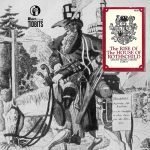
The Rise of the House of Rothschild
Historians, in interpreting the nineteenth century, have laid stress on many and various aspects of the period under study; and descriptions of isolated periods, single episodes, and individuals are scattered amongst hundreds and even thousands of books. On the other hand, certain special features of the period under consideration have been, for various reasons, entirely neglected. An example of such......
0 Likes
Share
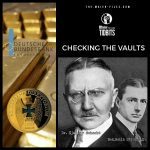
Checking the Vaults
A large portion of Germany’s massive gold reserves are stored abroad, mainly in the Federal Reserve in New York. But are the bars really where they are supposed to be? A dispute has broken out over whether the central bank needs to check on its gold, or if Germany can trust its international partners. Gold has been natural money for......
1 Like
Share
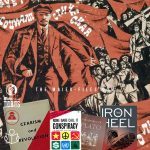
The Ruling Elite’s Creation of Socialism
Nineteenth century British Prime Minister Benjamin Disraeli commented that the world is governed by very different people from what is imagined by those who are not behind the scenes. Dr. Carroll Quigley who taught at Harvard and Princeton and at the Foreign Service School of Georgetown University wrote about this network of “insiders” who govern from behind the scenes in......
0 Likes
Share
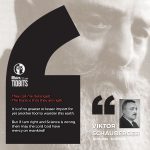
They call me deranged. The hope is that they are right.
Throughout recorded history humanity has been periodically uplifted by the contributions of a few gifted and enlightened individuals, whose teachings and philosophy have gradually raised the level of human awareness. Lesser mortals have also played a vital role in this process and the seeding of human consciousness with higher truths always seems to come at a time when humankind as......
3 Likes
Share

The Myth of a Guilty Nation
Albert Jay Nock wrote one of the first American books of WWI Revisionism, revising the received story of why WWI began. Originally published in 1922 by B. W. Huebsch, Inc. The Myth of a Guilty Nation was Albert Jay Nock’s first great antiwar book, a cause he backed his entire life. The book came out in 1922 and has been......
0 Likes
Share
0 notes
Text
New Post has been published on The Maier Files
New Post has been published on https://the.maier-files.com/central-banking-wars/
Central Banking Wars
[vc_row][vc_column width=’1/2′]
[/vc_column][vc_column width=’1/2′]
𝐈 𝐰𝐢𝐥𝐥 𝐫𝐨𝐮𝐭 𝐲𝐨𝐮 𝐨𝐮𝐭! 𝐘𝐨𝐮 𝐚𝐫𝐞 𝐚 𝐝𝐞𝐧 𝐨𝐟 𝐯𝐢𝐩𝐞𝐫𝐬 𝐚𝐧𝐝 𝐭𝐡𝐢𝐞𝐯𝐞𝐬 “Gentlemen! I too have been a close observer of the doings of the Bank of the United States. I have had men watching you for a long time, and am convinced that you have used the funds of the bank to speculate in the breadstuffs of the country. When you won, you divided the profits amongst you, and when you lost, you charged it to the bank. You tell me that if I take the deposits from the bank and annul its charter I shall ruin ten thousand families. That may be true, gentlemen, but that is your sin! Should I let you go on, you will ruin fifty thousand families, and that would be my sin! You are a den of vipers and thieves. I have determined to rout you out, and by the Eternal, I will rout you out!” ― quote Andrew Jackson, shortly before ending the charter of the Second Bank of the United States. From the original minutes of the Philadelphia committee of citizens sent to meet with President Jackson (February 1834). Shortly after President Jackson (the only American President to actually pay off the National Debt) ended the Second Bank of the United States, there was an attempted assassination which failed when both pistols used by the assassin, Richard Lawrence, failed to fire. Lawrence offered a variety of explanations for the shooting. He claimed that with the President dead, “money would be more plenty.” Lawrence was deemed insane and was institutionalized
[/vc_column][/vc_row]
[vc_row][vc_column width=’1/2′]U.S. President Zachary Taylor opposed the creation of a new Private Central Bank, owing to the historical abuses of the First and Second Banks of the United States. “The idea of a national bank is dead, and will not be revived in my time.” ― Zachary Taylor quote Taylor died on July 9, 1850 after eating a bowl of cherries and milk rumored to have been poisoned. 𝐓𝐡𝐞 𝐬𝐲𝐦𝐩𝐭𝐨𝐦𝐬 𝐡𝐞 𝐝𝐢𝐬𝐩𝐥𝐚𝐲𝐞𝐝 𝐚𝐫𝐞 𝐜𝐨𝐧𝐬𝐢𝐬𝐭𝐞𝐧𝐭 𝐰𝐢𝐭𝐡 𝐚𝐜𝐮𝐭𝐞 𝐚𝐫𝐬𝐞𝐧𝐢𝐜 𝐩𝐨𝐢𝐬𝐨𝐧𝐢𝐧𝐠[/vc_column][vc_column width=’1/2′][/vc_column][/vc_row]
[vc_row][vc_column width=’1/2′][/vc_column][vc_column width=’1/2′] ” I am the last President of the United States! ” ― James Buchanan. quote President James Buchanan also opposed a private central bank. During the panic of 1857 he attempted to set limits on banks issuing more loans than they had actual funds, and to require all issued bank notes to be backed by Federal Government assets. In the days surrounding his inauguration (March 4, 1857, four years before the outbreak of the Civil War) many guests at the hotel, or guests at Buchanan’s inauguration parties, complained of illnesses. He was poisoned with arsenic and survived, although 38 other people at the dinner died, including some of Buchanan’s relatives.[/vc_column][/vc_row]
[vc_row][vc_column width=’1/2′]When the Confederacy seceded from the United States, the bankers once again saw the opportunity for a rich harvest of debt, and offered to fund Lincoln’s efforts to bring the south back into the union, but at 30% interest. But as President, Lincoln issued a new government currency, the Greenback. This was a direct threat to the wealth and power of the central bankers, who quickly responded. Provoked by the private bankers, much of Europe supported the Confederacy against the Union, with the expectation that victory over Lincoln would mean the end of the Greenback. France and Britain considered an outright attack on the United States to aid the confederacy, but were held at bay by Russia, which had just ended the serfdom system and had a state central bank similar to the system the United States had been founded on. Left free of European intervention, the Union won the war, and Lincoln announced his intention to go on issuing greenbacks. Following Lincoln’s assassination, the Greenbacks were pulled from circulation and the American people forced to go back to an economy based on bank notes borrowed at interest from the private bankers. Tsar Alexander II, who authorized Russian military assistance to Lincoln, was subsequently the victim of multiple attempts on his life in 1866, 1879, and 1880, until his assassination in 1881. With the end of Lincoln’s Greenbacks, the US could no longer create its own interest free money and was manipulated during the term of President Ruthford B. Hayes into borrowing from the Rothschilds banking system in 1878, restoring to the Rothschilds control of the US economy they had lost under Andrew Jackson. [/vc_column][vc_column width=’1/2′][/vc_column][/vc_row]
[vc_row][vc_column width=’1/2′][/vc_column][vc_column width=’1/2′]James A. Garfield was elected President in 1880 on a platform of government control of the money supply. “The chief duty of the National Government in connection with the currency of the country is to coin money and declare its value. Grave doubts have been entertained whether Congress is authorized by the Constitution to make any form of paper money legal tender. The present issue of United States notes has been sustained by the necessities of war; but such paper should depend for its value and currency upon its convenience in use and its prompt redemption in coin at the will of the holder, and not upon its compulsory circulation. 𝐓𝐡𝐞𝐬𝐞 𝐧𝐨𝐭𝐞𝐬 𝐚𝐫𝐞 𝐧𝐨𝐭 𝐦𝐨𝐧𝐞𝐲, 𝐛𝐮𝐭 𝐩𝐫𝐨𝐦𝐢𝐬𝐞𝐬 𝐭𝐨 𝐩𝐚𝐲 𝐦𝐨𝐧𝐞𝐲. 𝐈𝐟 𝐭𝐡𝐞 𝐡𝐨𝐥𝐝𝐞𝐫𝐬 𝐝𝐞𝐦𝐚𝐧𝐝 𝐢𝐭, 𝐭𝐡𝐞 𝐩𝐫𝐨𝐦𝐢𝐬𝐞 𝐬𝐡𝐨𝐮𝐥𝐝 𝐛𝐞 𝐤𝐞𝐩𝐭.” ― James Garfield quote Garfield was shot on July 2, 1881. The wound was not immediately fatal for Garfield, but his doctors’ uncleaned and unprotected hands are said to have led to infection that caused his death on September 19. Chester A. Arthur succeeded Garfield as President …[/vc_column][/vc_row]
[vc_row][vc_column width=’1/2′]In 1896, William McKinley was elected President in the middle of a depression-driven debate over gold -backed government currency versus bank notes borrowed at interest from private banks. “Our financial system needs some revision; our money is all good now, but its value must not further be threatened. It should all be put upon an enduring basis, not subject to easy attack, nor its stability to doubt or dispute. Our currency should continue under the supervision of the Government. The several forms of our paper money offer, in my judgment, a constant embarrassment to the Government and a safe balance in the Treasury.” ― William McKinley quote McKinley was shot by an out-of-work ‘anarchist’ on September 14, 1901, in Buffalo, NY, succumbing to his wounds a few days later. He was suceeded in office by Theodore Roosevelt… [/vc_column][vc_column width=’1/2′]
[/vc_column][/vc_row]
[vc_row][vc_column width=’1/2′][/vc_column][vc_column width=’1/2′]“Issue of currency should be lodged with the government and be protected from domination by Wall Street. We are opposed to…provisions -which- would place our currency and credit system in private hands.” ― Theodore Roosevelt quote. Woodrow Wilson signed the 1913 Federal Reserve Act. And the conquest for world domination could finally start … Charles Lindbergh commented: “History has recorded nothing so dramatic in design, nor so skillfully manipulated, as this attempt to create the National Reserve Association, or the Federal Reserve.” A few years later Wilson wrote: “I am a most unhappy man. I have unwittingly ruined my country. A great industrial nation is controlled by its system of credit. Our system of credit is concentrated. The growth of the nation, therefore, and all our activities are in the hands of a few men. We have come to be one of the worst ruled, one of the most completely controlled and dominated Governments in the civilized world no longer a Government by free opinion, no longer a Government by conviction and the vote of the majority, but a Government by the opinion and duress of a small group of dominant men.” [/vc_column][/vc_row]
0 notes
Text
New Post has been published on The Maier Files
New Post has been published on https://the.maier-files.com/no-one-really-understands-quantum-theory/
No one really understands quantum theory
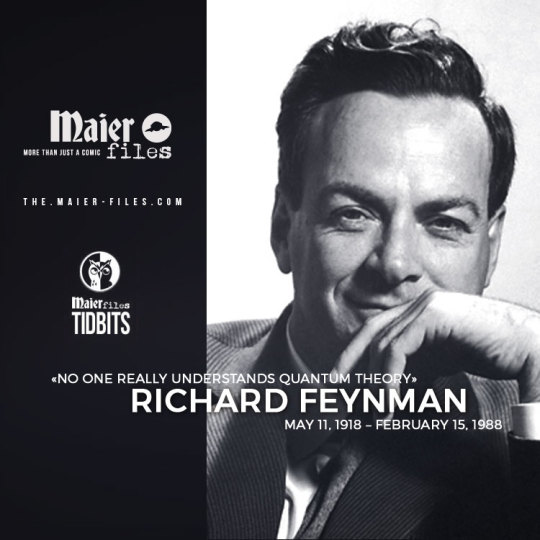
According to the great Richard Feynman, no one really understands quantum theory. It presents us with a truly bizarre picture of Reality, a picture that, for a long time, we have only succeeded in making intelligible by supposing that the existence and character of reality depends on our own minds.
[vc_row][vc_column width=’3/4′]This view is known as the Copenhagen Interpretation (named after the work of the Danish physicist Niels Bohr and his colleagues), and it mightily offended Einstein, whose realism could not accept that the universe is somehow dependent on our observations of it. Einstein is not alone; many physicists have attempted to devise theories of quantum reality capable of explaining its queerness. In quantum mechanics light is described as both wave and particle, and can be shown in the laboratory to behave as one or other according to circumstances. The ‘two-slit’ experiment is the classic example: if light is shone onto a screen through a pair of slits, a pattern of bright and dark bands results, thus confirming that light consists of waves – for waves interfere with each other as they ripple outwards from the slits, some of them joining forces to make bright bands on the screen, others cancelling out to make dark bands. But if one of the slits is closed, the light passes through the other slit as a stream of particles, impinging individually as dots on the screen. [vc_separator type=’transparent’ position=’center’ color=” thickness=” up=” down=”]This duality is strange enough, but even more puzzling is this: if one of the slits is opened or closed after an individual photon has been Bred at the other slit, the photon seems to ‘know’ what has happened: for if the other slit is open, the light behaves like a wave, but if it is closed, it behaves like a particle. It is this extraordinary fact that generates the deepest questions about the nature of physical reality. The Copenhagen school explains these phenomena by considering matters strictly from the observer’s viewpoint. On their theory, the observer influences the total experimental situation in such a way that its results are determined by his measuring activity. Whether light appears as a wave or particle is accordingly a function of the observer’s presence. This makes reality depend on our minds – just what Maier approved and Einstein rejected.

[/vc_column][vc_column width=’1/4′]



[/vc_column][/vc_row]
0 notes
Text
New Post has been published on The Maier Files
New Post has been published on https://the.maier-files.com/no-one-really-understands-quantum-theory/
No one really understands quantum theory

According to the great Richard Feynman, no one really understands quantum theory. It presents us with a truly bizarre picture of Reality, a picture that, for a long time, we have only succeeded in making intelligible by supposing that the existence and character of reality depends on our own minds.
[vc_row][vc_column width=’3/4′]This view is known as the Copenhagen Interpretation (named after the work of the Danish physicist Niels Bohr and his colleagues), and it mightily offended Einstein, whose realism could not accept that the universe is somehow dependent on our observations of it. Einstein is not alone; many physicists have attempted to devise theories of quantum reality capable of explaining its queerness. In quantum mechanics light is described as both wave and particle, and can be shown in the laboratory to behave as one or other according to circumstances. The ‘two-slit’ experiment is the classic example: if light is shone onto a screen through a pair of slits, a pattern of bright and dark bands results, thus confirming that light consists of waves – for waves interfere with each other as they ripple outwards from the slits, some of them joining forces to make bright bands on the screen, others cancelling out to make dark bands. But if one of the slits is closed, the light passes through the other slit as a stream of particles, impinging individually as dots on the screen. [vc_separator type=’transparent’ position=’center’ color=” thickness=” up=” down=”]This duality is strange enough, but even more puzzling is this: if one of the slits is opened or closed after an individual photon has been Bred at the other slit, the photon seems to ‘know’ what has happened: for if the other slit is open, the light behaves like a wave, but if it is closed, it behaves like a particle. It is this extraordinary fact that generates the deepest questions about the nature of physical reality. The Copenhagen school explains these phenomena by considering matters strictly from the observer’s viewpoint. On their theory, the observer influences the total experimental situation in such a way that its results are determined by his measuring activity. Whether light appears as a wave or particle is accordingly a function of the observer’s presence. This makes reality depend on our minds – just what Maier approved and Einstein rejected.

[/vc_column][vc_column width=’1/4′]



[/vc_column][/vc_row]
0 notes
Text
New Post has been published on The Maier Files
New Post has been published on https://the.maier-files.com/checking-the-vaults/
Checking the Vaults
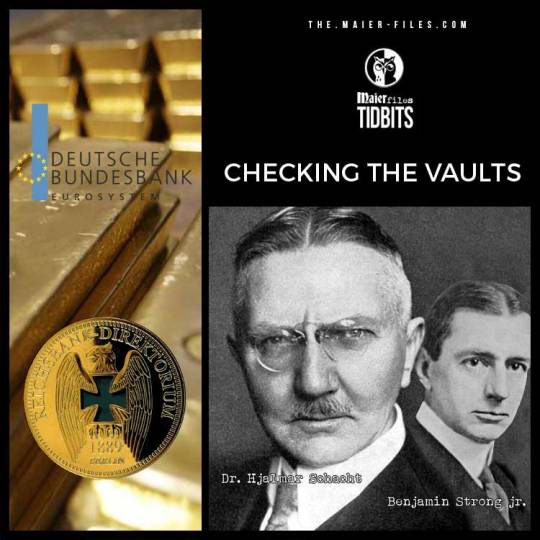
A large portion of Germany’s massive gold reserves are stored abroad, mainly in the Federal Reserve in New York. But are the bars really where they are supposed to be? A dispute has broken out over whether the central bank needs to check on its gold, or if Germany can trust its international partners.
Gold has been natural money for thousands of years. It has been used throughout history either as physical coinage or as solid cornerstone for stable paper currencies. Up until 1913, most Western societies prospered and grew steadily and naturally under a monetary standard with at least partial gold backing. The gradual abandonment of the gold backing throughout the 20th century and the ultimate delinkage of all currencies from gold in 1971 is the fundamental cause of the ongoing inflation (the US-Dollar has lost 98% of its purchasing power since 1913) as well as the main reason for the global financial crises since 2007.
[vc_row][vc_column width=’3/4′]During the late 1920s, the German Reichsbank President Dr. Hjalmar Schacht visited his friend, Benjamin Strong, then president of the New York Federal Reserve Bank and he was given a personal guided tour of the vaults of the bank by Strong. – (In the 1920’s several nations voluntarily or involuntarily agreed that all the most significant supplies of gold and silver in the world were turned over to the Federal Reserve and Bank of International Settlements and “blacklisted” — that is, taken off-market. (see other post)) Schacht tells us in his autobiography: “While the staff looked to the hiding place of the Reichsbank gold we went through the vaults. We waited several minutes; at length we were told: “Mr. Strong, we can’t find the Reichsbank gold.” Strong was flabbergasted but I consoled him. “Never mind: I believe you when you say the gold is there.” Even if it weren’t you are good for its replacement.” – p.245 Hjalmar Schacht, Confessions of the Old Wizard. https://amzn.to/2N4CIdC
Germany has gold reserves of just under 3,400 tons, the second-largest reserves in the world after the United States. Much of that is in the safekeeping of central banks outside Germany, especially in the US Federal Reserve in New York. One would think that with such a valuable stash, worth around €133 billion ($170 billion), the German government would want to keep a close eye on its whereabouts. But now a bizarre dispute has broken out between different German institutions over how closely the reserves should be checked.
In times of uncertainty about the future of Europe’s common currency, gold is a hot topic, and some Germans take a dim view of the fact that much of the country’s gold — which theoretically belongs to the people — is held abroad. Some members of parliament have even expressed doubts as to whether the foreign gold reserves really exist. [vc_separator type=’transparent’ position=’center’ color=” thickness=’20’ up=” down=”]
History repeats itself.
In 2012, Philipp Missfelder, a member of the conservative Christian Democratic Union (CDU), wanted to see the gold for himself and traveled to New York in person to inspect the holdings, according to the newspaper Frankfurter Rundschau. His trip was apparently unsuccessful, though. When he visited the Fed’s safes in New York, staff were either unable or unwilling to show him exactly which bars belonged to Germany.
In July 2011, SPIEGEL reported that Bundesbank employees had physically seen the gold in New York within the previous six months. However, the last time it had been checked before that was in June 2007.
Gauweiler doubts that the Bundesbank would have immediate access to all its gold if necessary, suggesting that part of the gold may have even been lent out — a claim that the Bundesbank rejects.
The Bundesbank wants to leave the gold where it is. Observers point out that apart from the high cost of transporting the gold back to Frankfurt, the symbolic effect of Germany repatriating its gold reserves might unsettle the nervous financial markets, who could see it as a sign of an impending collapse of the euro.
http://www.spiegel.de/international/germany/debate-breaks-out-in-germany-over-foreign-gold-reserves-a-833289.html
[/vc_column][vc_column width=’1/4′]



[/vc_column][/vc_row]
#banking#Banks#bankster#Bis#bullion#conspiracy#cover-up#Gold#hidden treasure#history#Maier Files#manipulation#missing gold#Money#secret#truth#World War#WW2
0 notes
Text
New Post has been published on The Maier Files
New Post has been published on https://the.maier-files.com/crows-and-ravens-in-mythology/
Crows and Ravens in mythology

Crows are brought up in the mythology of countless cultures around the world as they are frequently characterised as guides for traveling between worlds. In European folklore, crows were said to convene courts, pass judgments, and also execute guilty members. Connected with the Goddess’s death aspect, crows came to be perceived as evil or simply fearsome. In medieval days, finding the foot of a crow, often referred to as a witches’ foot, was considered a mark or sign of death. The Greeks thought of crows as messengers of the gods carrying wisdom and secrets. These birds were also widespread in Roman and Norse mythology. In India, a crow landing on a nearby tree was an indication of good fortune. Additionally, Hindu legends tell of crows bringing messages and offerings to people’s forebears. Crows are well known in Celtic lore and regarded as on the edge between light and dark, life and death. In Ireland, crows and ravens represented the goddess known as the Morrigan in her trinity with Badb and Macha. The name Badb means “crow,” and this goddess was said to carry souls to the otherworld after battle.
[vc_row][vc_column width=’3/4′]
In ancient Gaul, the goddess Nantosuelta was portrayed with a crow or raven along with a dovecote. The dove and crow or raven together symbolized the interlinked life/death facets of the Great Goddess. Regarded as one of the most intelligent of animals, crows learn rapidly, resolve problems frequently in collaboration with one another, utilize gear, and even play. Additionally, they are very inquisitive. In magic the Crow is a harbinger of change, delivering messages from other realms and at times warning of danger. Connected with war and death, it points the path into the afterlife. Though the destructiveness it seems to bring might cause fear, a crow delivers wisdom to see beyond into the fertile womb of darkness where rebirth and manifestation begin. Fostering growth, crow’s darkness is a cradle for creativity and intuition where it can help incubate talents. Crow is also instrumental in opening awareness for divination and all forms of communication.
Beside crows, the Celts related ravens with goddesses of war who emerged over and around battlefields. In England, gravestones were commonly called raven stones due to this bird’s connection and association with death. In Ireland, the gift of second sight or prophecy was better-known as raven’s knowledge. Regarded the only bird that could possibly understand and interpret omens, it absolutely was a very important animal of prophecy for the Romans. To the Greeks and Romans, a raven’s sound, the number of times it was heard, the direction from which it came, and the time of day that it was heard each had a particular meaning. Even though they are black, the Greeks and Chinese viewed ravens solar birds. In Swedish folklore, ravens were regarded as the spirits of the dead. Norse god Odin kept two of these birds, which symbolized thought and memory Hugin and Munin. Additionally, his daughters, the Valkyries, often shapeshifted into ravens. The Vikings used depictions of ravens on the sails of their ships as homage to Odin and as a sign of good luck. Similarly, it was good luck to see a raven at the start of a hunting trip in Scotland. During the Middle Ages and the spread of literalist Christianity ravens were associated with witchcraft and black magic, and they were believed to be able to cast evil spells. It is also legend that when King Arthur returns, he will be in the form of a raven. It was also believed that witches and devils could shape-shift into ravens, as did the “dark fairies”. The raven’s species name comes from the Greek korax, meaning “croaker,” and its common name is from Old Norse hrafn, “to clear one’s throat.” In addition to gruff sounds, ravens have thirty to forty different calls and use body language. They can mimic other birds and human speech, too. Ravens are highly intelligent, make and use tools, and can solve complex problems. However, a raven’s life is not all work and no play. Like crows, ravens play with each other as well as with other birds and animals. Ravens may also have a sense of humor, as they have been observed flying upside down.
Maier files Raven T-shirt
Hugin T-shirt
[/vc_column][vc_column width=’1/4′]



[/vc_column][/vc_row]
0 notes
Text
New Post has been published on The Maier Files
New Post has been published on https://the.maier-files.com/maiers-hidden-knowledge/
Maier's hidden knowledge
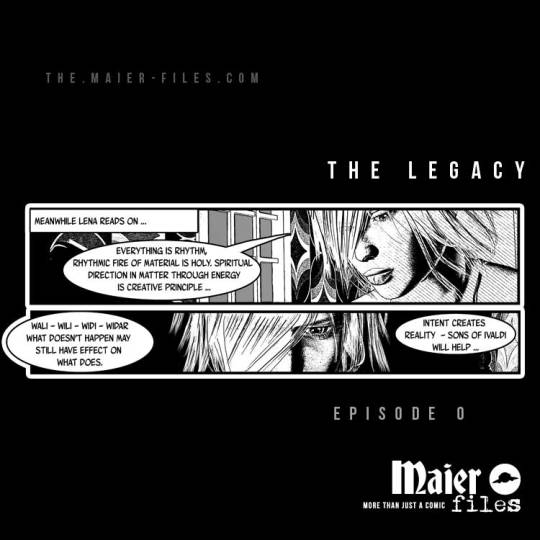
Otto Maier’s secret texts. Is there more than meets the eye? Wali – Wili – Widi – Widar. In Eddic mythology Odihn is avenged on the Fenris wolf by Widar. Wili is named alongside We as Odhin’s or Wotan’s brother. According to the third poem in the Poetic Edda, the vafthrudnismal (Vafþrúðnismál). Widar and Wali (who avenges Baldur on Hödur) rule over the sanctuary once Surtur’s flames have gone out. He is also called Ali and is said to be the son of Odihn and Rind. The names indicate an inner relationship between Wali-Wili-Widi-Widar. Common to them all is the “W” as a sign of turning in “Wendung”.
[vc_row][vc_column width=’3/4′]Nobody knows for sure but it as much to do with transformation and transmutation, a common concept in alchemy. It’s a big riddle where everything is interwinded. We will probably come closest to the concepts hidden behind these names as one of the ancient theories of Bülow explains that:
Wali:
stands for Life’s changing the ego toward unity. Wal is freedom, the freedom to choose (as in German; die Wahlfreiheit). It’s at the same time associated with the realm of the dead -Walhalla, the seat of the Einherjar. In Norse mythology, the Einherjar (Old Norse “single, individual fighters”) are those who have died in battle and are brought to Walhalla by Valkyries. The Einherjar prepare daily for the events of Ragnarök, when they will advance for an immense battle at the field of Vígríðr; the battle which the “ein” this time refers to single-time. Scholarly theories have been proposed etymologically connecting the einherjar to the Harii (a Germanic tribe attested in the 1st century AD), the eternal battle of Hjaðningavíg, and the Wild Hunt. But that’s for another post.
Wili:
Life’s changing from one ego to another through the will of light.
Widi:
Generational change from one ego to another through knowledge of the tree of life, i.e., ‘of the organic nature of all changes.’
Widar:
The turning of the ego toward generating the rhythm of unity. His sign is the eagle (Aar) which hunts for fish among the rocky cliffs. He flies above solidity (rocks) and the clean, fluid element of life (symbolised by a fish). He therefore also rules over the processes of growth. Unsown fields bear fruit for him.
src.: W. Bülow
The Sons of Ivaldi
In Norse mythology, the Sons of Ivaldi are a group of dwarfs who made Skidbladnir, the ship of Freyr, and the Gungnir, the spear of Odihn, as well as golden hair for Sif to replace what Loki had cut off. Based on Skáldskaparmál, after these items were created Loki made a bet with a dwarf, Brokkr, that his brother Eitri (or Sindri) would not have the ability to craft objects to meet the top notch quality of those exhibited by the sons of Ivaldi. This contest led to the creation of the boar of Freyr (Gullinbursti), the ring of Odin (Draupnir) as well as the hammer of Thor (Mjolnir), which were judged by the gods to be even more marvelous compared to the others. Therefore, Brokkr had won the bet.
The account of this tale presented in Skáldskaparmál fails to disclose the names of Ivaldi’s sons, nor how many there were, and they remain conspicuously absent after their initial mention in the stanza. In Grímnismál 43 they’re mentioned once more as the creators of Skidbladnir, “the greatest of all ships”, likewise this drops no extra light. And so, their identities are simply a matter of scholarly hypothesis.
In the eddic poem Hrafnagaldur Óðins, stanza six, Idunn is identified as an “elf” (alfar) and the “youngest of the more aged children of Ivaldi.” This indicates that Ivaldi had two sets of offspring, most likely by different mothers. Therefore Idunn is a sister of those celebrated, famous smiths, the Sons of Ivaldi.

[/vc_column][vc_column width=’1/4′]



[/vc_column][/vc_row]
2 notes
·
View notes
Text
New Post has been published on The Maier Files
New Post has been published on http://the.maier-files.com/disir-the-guardian-spirits/
Disir - the Guardian Spirits
Apart from gods or goddesses, medieval authors often refer to female guardian spirits identified as dísir and sometimes fylgjur. The conceptions under-lying these two kinds of spirits undoubtedly differed initially, however some of the later authors employed the terms interchangeably.
[vc_row][vc_column width=’3/4′]
Reference is made several times to sacrifice to the dísir, conducted at the start of the winter season. The ritual concerned a festive meal and seems to have been a private ceremony, hinting that the dísir belonged to one household, one small region, or one family. In an Eddic poem the dísir are referred to as “dead women,” and in fact they may have been dead female forebears, reassuring the prosperity of their descendants.
There is not any record found of a cult of the fylgja (plural fylgjur), a term best translated as “ghost,” or “phantom.” The fylgja normally takes the form of a lady or even an which is not often spotted unless it is in dreams or at the time of death. It may be the companion of one man or of a family and is passed on at death from father to son.
So the Dísir may act as protective spirits of Norse clans. Like the valkyries, norns, and vættir, are almost always referred to collectively. The North Germanic dísir and West Germanic Idisi are believed by some scholars to be related due to linguistic and mythological similarities. According to Rudolf Simek, Old Norse dís appears commonly as simply a term for ‘woman,’ just as Old High German itis, Old Saxon idis, and Anglo-Saxon ides, and may have also been used to denote a type of goddess. According to Simek, “several of the Eddic sources might lead us to conclude that the disir were valkyrie-like guardians of the dead, and indeed in Guðrúnarkviða I 19 the valkyries are even called Herjans disir ‘Odin’s disir’.
Who are the mighty Disir?
[/vc_column][vc_column width=’1/4′]
[/vc_column][/vc_row]
Three sisters Maier files
1 note
·
View note
Text
New Post has been published on The Maier Files
New Post has been published on https://the.maier-files.com/the-devils-square/
The Devil's Square

The sator arepo formula was well known throughout the ancient and medieval worlds, and in fact, known as the “Devil’s latin” or the “Devil’s Square”. It remained quite popular in Scandinavia into the 19th century as protection against theft and various illnesses. The magical effect of the formula lies in the fact that if properly spelt and laid out, it constitutes a 25 letter word-square, reading the same horizontally and vertically, left to right and in reverse:
[vc_row][vc_column width=’3/4′] SATOR
AREPO
TENET
OPERA
ROTAS
The earliest documented occurrences of the formula are found in the ruins of Pompeii, which suggest it is ultimately pre-Christian; some scholars and researchers maintain it originated as symbolic of the wheel and swastika (rotas) or was associated with agrarian rites. There have been many interpretations of this rather nonsensical sequence. Almost all attempts to get a valid explanation strand on the term “Arepo”, which is not Latin. The most straightforward translation runs “The sower Arepo holds the wheels at work”.
The use of the words of the square in magic of many sorts ensured that any linguistic sense was evidently lost early, however, the words valued more for their effect to turn away harm or evil influences. (This appears frequently alongside other palindromes, powerful names, magic formulas and symbols.) Other attempts to give an explanation to the sequence regard it as an anagram. The popular derivation is that this may be based on the letters of the ‘Lord’s Prayer’ in Latin plus the Greek letters A (Alpha) and O (Omega) forming a cross spelling PATER NOSTER.
But this cryptological solution to the riddle, first developed in the 1920’s, however, may be little more than modern fiction, as there are manifold other ways of rearranging the letters to render religious expressions both Christian and otherwise. Nevertheless and in fact a number of alternative anagrammatic rearrangements invoking Satan made their way into books of black magic.
H. Hofmann commented “Satorquadrat”, in Real-Encyclopaedie der Altertumswissenschaft pp 477-565; Perhaps inevitably due to the difficulties of translation, the formula has thus been widely resolved into different solutions, both Pagan and Christian and nonsensical, by reshuffling the letters or by identifying various abbreviatory encodements or cryptograms, acronyms or even anagrams (again in resulting a myriad of possibilities, of which the most popular is the Pater Noster explanation). While the background of the square has been variously defended as letter magic – as created in Pythagorean mystical circles or alternatively as Christian, Jewish, Gnostic, Pagan, numerological and geometrically symbolic, its use in Christian amulets is incontestable. The use of the formula in magic was condemned by 17th century Icelandic cleric Einarsson.
Whatever its origin, the formula is found all over the Roman world and, from the 9th century, the words of the square featured regularly in medieval European charms and talismans, occurring in Norwegian and Danish black magic as late as the 19th century! It was also used in blessings, as general protection, or sometimes specifically against, fire, theft, sickness, madness,lightning, pain or heartache.
Runically, this Sator Arepo Tenet formula is found several times in Sweden, Iceland and Norway some employing a spelling mistake. One encounters it also in incomplete form, with only the words sator arepo tenet remaining on several rune-sticks. Although the sequence is not definitely attested in Runes in Denmark, it is found carved in Roman letters in the limestone brickworks of the Skellerup church of North Jutland.
[/vc_column][vc_column width=’1/4′]



[/vc_column][/vc_row] Get the Sator Arepo Tenet Poster here
Magical Formula in old Runes
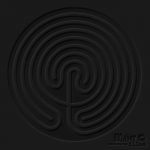
What were these labyrinths for?
Since the dawn of civilization, labyrinths have fascinated humankind. Knossos in Crete, has a distinctive circular maze design with seven rings. Exactly the same design appears mysteriously at different periods in history on stones and artifacts as far apart as India, Norway, Germany, Ireland, England, Arizona, … In English, the term labyrinth is generally synonymous with maze. As a result......
1 Like
Share

Finally the birds sing again
Every winged being is symbolic of spiritualization. Birds are very frequently used to symbolize human souls, some of the earliest examples being found in the art of ancient Egypt. The bird, according to Jung, is a beneficent animal representing spirits or angels, supernatural aid, thoughts and flights of fancy. Hindu tradition has it that birds represent the higher states of......
0 Likes
Share

The Devil’s Square
The sator arepo formula was well known throughout the ancient and medieval worlds, and in fact, known as the “Devil’s latin” or the “Devil’s Square”. It remained quite popular in Scandinavia into the 19th century as protection against theft and various illnesses. The magical effect of the formula lies in the fact that if properly spelt and laid out, it......
0 Likes
Share
0 notes
Text
New Post has been published on The Maier Files
New Post has been published on http://the.maier-files.com/the-devils-square/
The Devil's Square
The sator arepo formula was well known throughout the ancient and medieval worlds, and in fact, known as the “Devil’s latin” or the “Devil’s Square”. It remained quite popular in Scandinavia into the 19th century as protection against theft and various illnesses. The magical effect of the formula lies in the fact that if properly spelt and laid out, it constitutes a 25 letter word-square, reading the same horizontally and vertically, left to right and in reverse:
[vc_row][vc_column width=’3/4′] SATOR
AREPO
TENET
OPERA
ROTAS
The earliest documented occurrences of the formula are found in the ruins of Pompeii, which suggest it is ultimately pre-Christian; some scholars and researchers maintain it originated as symbolic of the wheel and swastika (rotas) or was associated with agrarian rites. There have been many interpretations of this rather nonsensical sequence. Almost all attempts to get a valid explanation strand on the term “Arepo”, which as not Latin. The most straightforward translation runs “The sower Arepo holds the wheels at work”.
The use of the words of the square in magic of many sorts ensured that any linguistic sense was evidently lost early, however, the words valued more for their effect to turn away harm or evil influences. (This appears frequently alongside other palindromes, powerful names, magic formulas and symbols.) Other attempts to give an explanation to the sequence regard it as an anagram. The popular derivation is that this may be based on the letters of the ‘Lord’s Prayer’ in Latin plus the Greek letters A (Alpha) and O (Omega) forming a cross spelling PATER NOSTER.
But this cryptological solution to the riddle, first developed in the 1920’s, however, may be little more than modern fiction, as there are manifold other ways of rearranging the letters to render religious expressions both Christian and otherwise. Nevertheless and in fact a number of alternative anagrammatic rearrangements invoking Satan made their wat into books of black magic.
H. Hofmann commented “Satorquadrat”, in Real-Encyclopaedie der Altertumswissenschaft pp 477-565; Perhaps inevitably due to the difficulties of translation, the formula has thus been widely resolved into different solutions, both Pagan and Christian and nonsensical, by reshuffling the letters or by identifying various abbreviatory encodements or cryptograms, acronyms or even anagrams (again in resulting a myriad of possibilities, of which the most popular is the Pater Noster explanation). While the background of the square has been variously defended as letter magic – as created in Pythagorean mystical circles or alternatively as Christian, Jewish, Gnostic, Pagan, numerological and geometrically symbolic, its use in Christian amulets is incontestable. The use of the formula in magic was condemned by 17th century Icelandic cleric Einarsson.
Whatever its origin, the formula is found all over the Roman world and, from the 9th century, the words of the square featured regularly in medieval European charms and talismans, occurring in Norwegian and Danish black magic as late as the 19th century! It was also used in blessings, as general protection, or sometimes specifically against, fire, theft, sickness, madness,lightning, pain or heartache.
Runically, this Sator Arepo Tenet formula is found 8 times in Sweden, Iceland and Norway. One encounters it also in incomplete form, with only the words sator arepo tenet remaining.
[/vc_column][vc_column width=’1/4′]
[/vc_column][/vc_row] Get the Sator Arepo Tenet Poster here
Magical Formula in old Runes
0 notes
Text
New Post has been published on The Maier Files
New Post has been published on http://the.maier-files.com/the-evolution-of-civilizations/
The Evolution of Civilizations
The Evolution of Civilizations expresses two dimensions of its author, Carroll Quigley, that most extraordinary historian, philosopher, and teacher. In the first place, its scope is wide-ranging, covering the whole of man’s activities throughout time. Second, it is analytic, not merely descriptive. It attempts a categorization of man’s activities in sequential fashion so as to provide a causal explanation of the stages of civilization. Quigley coupled enormous capacity for work with a peculiarly “scientific” approach. He believed that it should be possible to examine the data and draw conclusions.
[vc_row][vc_column width=’3/4′]
Quigley chose a life dedicated to rationality. He addressed the problem of explaining change in the world around us, first examined by Heraclitus in ancient Greece. Beneath that constant change, so apparent and itself so real, what is permanent and unchanging? Quigley wanted an explanation that in its very categorization would give meaning to a history which was a record of constant change. Therefore the analysis had to include but not be limited to categories of subject areas of human activity —military, political, economic, social, religious, intellectual. It had to describe change in categories expressed sequentially in time— mixture, gestation, expansion, conflict, universal empire, decay, invasion. It was a most ambitious effort to make history rationally understandable.
In Evolution of Civilizations, Quigley describes the basic ideology of Western civilization as expressed in the statement, “The truth unfolds in time through a communal process.” People must constantly search for the “Truth” by building upon what others have learned. But no knowledge can be assumed to be complete and final. It could be contradicted by new information received tomorrow.
Quigley always retained his belief in the scientific method. Therefore, he saw Hegel and Marx as foolhardy and pretentious, in error, and outside the Western tradition in their analysis of history as an ideologic dialectic culminating in the present or immediate future in a homeostatic condition. Quigley comments upon the constant repetition of conflict and expansion stages in Western history. That reform process owes its possibility to the uniquely Western belief that truth is continually unfolding. Therefore Western civilization is capable of reexamining its direction and its institutions, and changing both as appears necessary. So in Western history, there was a succession of technological breakthroughs in agricultural practice and in commerce.
Outmoded institutions like feudalism and —in the commercial area— municipal mercantilism in the period 1270- 1440, and state mercantilism in the period 1690-1810 were discarded. Similarly, we may also survive the economic crisis described by Quigley as monopoly capitalism in the present post-1900 period. Yet Quigley perceives the possible termination of open-ended Western civilization. With access to an explosive technology that can tear the planet apart, coupled with the failure of Western civilization to establish any viable system of world government, local political authority will tend to become violent and absolutist. As we move into irrational activism, states will seize upon ideologies that justify absolutism. The 2,000-year separation in Western history of state and society would then end. Western people would rejoin those of the rest of the world in merging the two into a single entity, authoritarian and static. The age that we are about to enter would be an ideologic one consistent with the views of Hegel and Marx (a homeostatic condition. That triumph would end the Western experiment and return us to the experience of the rest of the world) namely, that history is a sequence of stages in the rise and fall of absolutist ideologies.
Quigley stated:
“The Evolution of Civilizations is not a history. Rather it is an attempt to establish analytical tools that will assist the understanding of history. Most historians will regard such an effort as unnecessary or even impossible. Those who claim that no analytical tools are needed in order to write history are naive. To them the facts of history are relatively few and are simply arranged. The historian’s task is merely to find these facts; their arrangement will be obvious. But it should require only a moment’s thought to recognize that the facts of the past are infinite, and the possible arrangements of any selection from these facts are equally numerous. Since all the facts cannot be mobilized in any written history because of their great number, there must be some principle on which selection from these facts is based. Such a principle is a tool of historical analysis. Any sophisticated historian should be aware of the principles he uses and should be explicit to his readers about these. If historians are not explicit, at least to themselves, about their principles of selection among the facts of the past and among the many possible arrangements of these facts, all histories will be simply accidental compilations that cannot be justified in any rational way. Historians will continue to write about some of the events of history while neglecting others equally significant or even more significant, and they will form patterns for these facts along lines determined by traditional (and basically accidental) lines or in reflection of old controversies about the patterns of these facts.”
[/vc_column][vc_column width=’1/4′]
[/vc_column][/vc_row]
For those who are fascinated by history a must read book:
https://amzn.to/2AwxPEy
The Secret Money Powers
0 notes
Text
New Post has been published on The Maier Files
New Post has been published on http://the.maier-files.com/the-12-knights/
The 12 Knights
In almost all myths all over the world the same theme reoccurs. The 12 knights, 12 tribes, 12 heroes etc. In his last and longest dialogue (Laws), Plato teaches: “There are 12 feasts to the 12 Gods who give their names to the 12 tribes.” Also in early christianity, the image of 12 disciples with the Godman figure at their center echoes the 12 constellations which revolve in the heavens around the pole star. The importance of the pole and the zodiac in ancient Egypt is demonstrated by 2 so-called ‘air shafts’ found in the King’s Chamber of the Great Pyramid. They are inclined to within 1 degree of accuracy on the celestial pole to the North and the constellation of Orion in the south. Lucie Lamy gives a more likely explanation of those peculiar shafts as “two ways offered to each individual, that of final liberation to the North or reincarnation on the wheel in the south”. In the Pyramid text one can read: “He climbs to the sky among the imperishable stars.” so, the distant realm to which the Pharaoh always goes is the sky.
[vc_row][vc_column width=’3/4′]
The stars of the circumpolar region were considered eternal, for unlike the zodiacal band, they never descended below the horizon, i.e. they never come into reincarnation. In the Pagan Mysteries 12 initiates wore masks representing the zodiac signs and danced around a central initiate, symbolizing the Godman and the pole star. As the Flemish archaeologist and historian Frans Cumont notes, the sacred masks were interpreted by Pagan theologians as an allusion to the signs of the zodiac and even to the doctrine of metempsychosis which is a philosophical term in the Greek language referring to transmigration of the soul. Also Christians practised similar ritual dances. The acts of John describes an initiatory ceremony in which the 12 disciples, representing the constellations, perform a dance around Jesus, who represent the pole star, at the centre. (See Acts of John 97 -100)
Jesus teaches that the true nature of suffering can be understood by comprehending the circle dance which he leads. What does he mean? The ancients conceived of the turning wheel of the zodiac as the ‘wheel of suffering’ or ‘wheel of necessity or ‘wheel of fate’.
In book 16 of the Corpus Hermeticum, Hermes Trismegistus explains:
It is man’s lot to live his life according to the fate determined for him by these circling celestial powers.
By identifying with the physical body, which is governed by the laws of cause and effect, we have become prisoners on the ‘wheel of necessity’. We are bound to the ‘wheel of suffering’ and must endure the consequences. The only escape is to realize our true impersonal identity as Consciousness at the still centre of the turning wheel, represented by the Godman and the pole star.
Because each of the constellations of the zodiac spends six months of every year below the horizon and six months above, the zodiac was also seen as representing the wheel of reincarnation, which carries us through a recurring cycle of life and death. As Pythagoras explains:
Revolving around the wheel of necessity, the psyche is transformed and confined at different times in different bodies.
The process of initiation was designed to free initiates from the wheel by revealing their essential identity at the still centre. Proclus, called the Successor, teaches that those initiated into the Mysteries of Persephone and Dionysus pray that they may cease from the wheel’.
In Pagan mythology, the sign of Cancer represents the path into the cave of the cosmos and the sign of Capricon represents the way out. Porphyry writes:
Cancer is the gate through which psyches descend, but Capricorn is the gate through which they ascend.
In astrology Cancer is ruled by the moon, the mistress of life, Capricorn by Saturn, the master of death. And once again we encounter the paradox; life is death and death is life similar to the story of sleeping beauty as one out of many.
[/vc_column][vc_column width=’1/4′]
[/vc_column][/vc_row]
https://amzn.to/2mTdM9J
4 notes
·
View notes
Text
New Post has been published on The Maier Files
New Post has been published on http://the.maier-files.com/the-tower-at-bollingen/
The Tower at Bollingen
[vc_row][vc_column width=’3/4′]In the Tower at Bollingen it is as if one lived many centuries simultaneously. The place will outlive me, and in its location and style it points backward to things of long ago. There is very little about it to suggest the present. If a man of the sixteenth century were to move into the house, only the kerosene lamp and the matches would be new to him; otherwise, he would know his way about without difficulty. There is nothing to disturb the dead, neither electric light nor telephone. Moreover, my ancestors’ souls are sustained by the atmosphere of the house, since I answer for them the questions that their lives once left behind. I carve out rough answers as best I can. I have even drawn them on the walls. It is as if a silent, greater family, stretching down the centuries, were peopling the house.
Quote from Memories, Dreams, Reflections (1962), p. 237. ― Carl Gustav Jung.
In 1950, on the occasion of his 75th birthday, Jung set up a stone cube on the lakeshore, just west of the tower, inscribing it on three sides. One side contains the quote: “Hic lapis exilis extat, pretio quoque vilis, spernitur a stultis, amatur plus ab edoctis.” Here stands the mean, uncomely stone, ‘Tis very cheap in price! The more it is despised by fools, The more loved by the wise. The second side of the cube depicts a Telesphorus figure, a homunculus bearing a lantern and wearing a hooded cape. It is surrounded by a Greek inscription. The inscription says: Time is a child — playing like a child — playing a board game — the kingdom of the child. This is Telesphoros, who roams through the dark regions of this cosmos and glows like a star out of the depths. He points the way to the gates of the sun and to the land of dreams. (Heraclitus) The second side also contains a four-part mandala of alchemical significance. The top quarter of the mandala is dedicated to Saturn, the bottom quarter to Mars, the left quarter to Sol-Jupiter [male], and the right quarter to Luna-Venus [female]. The third side of the cube is the side that faces the lake. The inscription says: I am an orphan, alone; nevertheless I am found everywhere. I am one, but opposed to myself. I am youth and old man at one and the same time. I have known neither father nor mother, because I have had to be fetched out of the deep like a fish, or fell like a white stone from heaven. In woods and mountains I roam, but I am hidden in the innermost soul of man. I am mortal for everyone, yet I am not touched by the cycle of aeons.[/vc_column][vc_column width=’1/4′]
[/vc_column][/vc_row]
1 note
·
View note